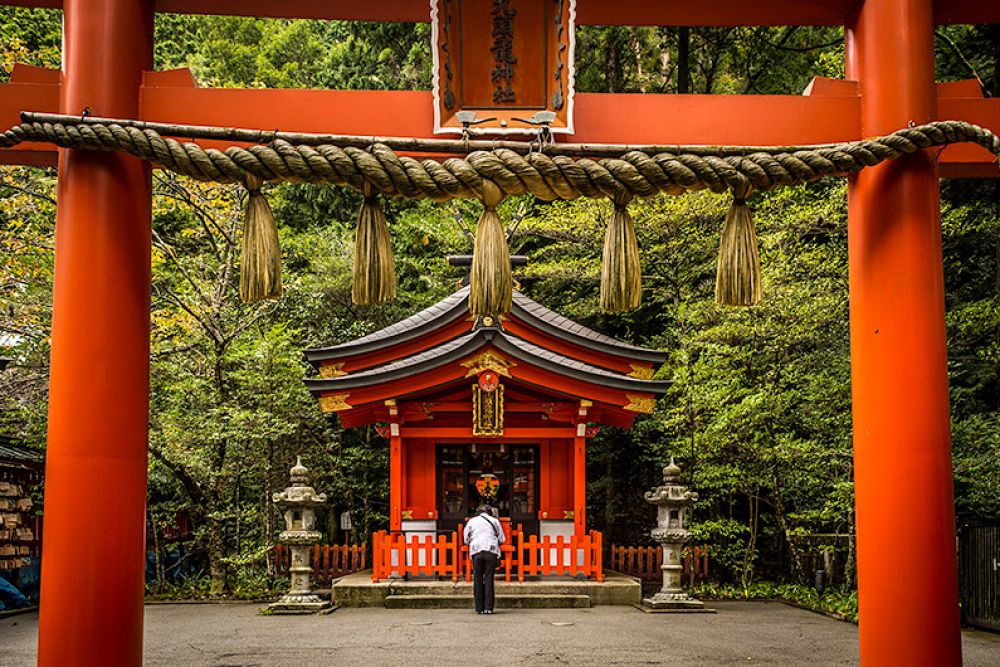

Steeped in history and tradition, Hakone Shrine has long been a significant destination for both pilgrims and tourists. Nestled within the lush greenery of the Fuji-Hakone-Izu National Park, this sacred Shinto shrine stands at the foot of Mount Hakone along the shores of Lake Ashi. Its enigmatic presence, shrouded often in mist, draws visitors back to a period where samurai warriors would stop to pray for victory before going into battle.
The history of the Hakone Shrine begins in 757 AD when its original founding is said to have taken place. It is dedicated to the spirits of Hakone Gongen, who are believed to guard the Kanto area. The shrine was venerated by many, including notable figures from Japanese history such as the famous shogun Tokugawa Ieyasu. For centuries, the Hakone Shrine remained an important site for the practice of mountain asceticism, with monks and lay practitioners seeking spiritual power through the rigors of nature and trails around the shrine.
As travel became more accessible during the Edo period (1603-1868), the Tokugawa shogunate established the Hakone Checkpoint, which controlled traffic along the Tōkaidō road, an important transport route connecting Edo (now Tokyo) with Kyoto. This checkpoint brought a number of travelers and pilgrims through the region, which slowly began to increase the number of visitors to the shrine. Inns and tea houses began to proliferate in Hakone, catering to these travelers.
In recent years, the Hakone Shrine has maintained its importance as a spiritual center and also emerged as a prime tourism destination. It has been part of the broader trend in Japan of power spot tourism, where people visit places believed to be abundant in spiritual energy. The shrine's Torii gate, standing in Lake Ashi, is among the most photographed spots in Hakone, exuding a sense of tranquility and mystique that characterizes the shrine's spiritual environment.
Eco-tourism is another growing trend, with visitors seeking the natural beauty and serene atmosphere of Hakone's mountainous landscapes. Additionally, cultural tourism continues to flourish, with the Hakone Shrine incorporating events such as the Yumoto Hakone Matsuri, which includes a parade of portable shrines (mikoshi) and traditional dragon dances.
The future of tourism in Hakone and at the Hakone Shrine looks promising. Efforts to preserve the cultural and historical integrity of the shrine, while also accommodating and encouraging sustainable tourism practices, are ongoing. As global travel preferences shift towards more immersive and authentic experiences, the Hakone Shrine stands as a testament to the enduring allure of Japan's rich cultural and spiritual heritage.
The shrine continues to be a key attraction during all seasons, particularly in the spring with cherry blossoms, or the autumn with vibrant fall colors. Engaging with the history and natural splendor of Hakone enriches the experience for visitors and ensures the legacy of the region as a premier travel destination in Japan.